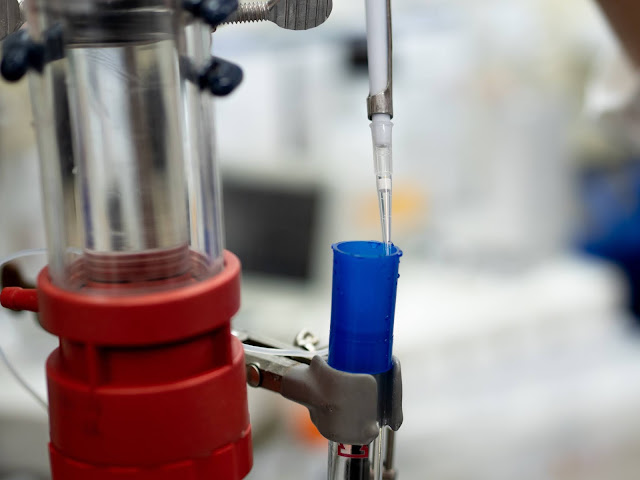USU Develops Single-Dose Vaccine for Deadly Nipah Virus
By Sarah Marshall
For years, scientists have warned the Nipah virus -- a brain-swelling disease 75 times more deadly than COVID -- could be the next pandemic. Knowing that this fruit bat-borne virus has the potential to trigger an epidemic, researchers at USU have long studied the virus and recently reported on the development of a single-dose vaccine that, in preclinical trials, has proven effective against it as early as seven days after immunization.
 |
| Like Nipah, the Hendra virus was also discovered in the 1990s and has also been found naturally in several species of fruit bats (flying foxes). (Courtesy photo) |
The Nipah virus strain in Bangladesh and India, known as Nipah-B, is one of greatest concern because
of its impressive lethality and ability to be transmitted from one infected individual to another. This was evident in the Nipah virus outbreak in Kerala, India, in 2018, where 21 fatalities of 23 cases were recorded, all resulting from a single initial case of Nipah infection. Both Nipah and Hendra also have the ability to cross between a number of animal species often with serious disease consequences.
USU researchers, Drs. Antony Dimitrov and Christopher Broder of the Department of Microbiology and Immunology, led a collaborative study with scientists at Profectus BioSciences, Inc. (now Auro Vaccines LLC) and Dr. Thomas Geisbert, a USU graduate and now professor in the Department of Microbiology and Immunology at the University of Texas Medical Branch (UTMB), Galveston National Laboratory (GNL), to conduct two preclinical studies of a Nipah and Hendra virus vaccine. Their findings, “A Single Dose Investigational Subunit Vaccine for Human Use against Nipah virus and Hendra virus,” were published in npj Vaccines in February.
"A possible vaccine for use in people now seems close to reality.” - Dr. Christopher Broder
In their experiments conducted at the GNL, where there is a high-level containment and security facility for working with live Nipah and Hendra viruses, the researchers demonstrated that a protein subunit vaccine could be effective as early as a week after being administered to subjects (instead of using the entire pathogen, subunit vaccines include only the components that best stimulate the immune system). When they immunized subjects with a single dose of this vaccine that is based on a protein found in the Hendra virus, it resulted in complete protection against either Nipah virus or Hendra virus infection -- with no evidence of the disease.
“These latest findings are really quite impressive and support a real potential vaccine treatment against Nipah and Hendra virus infection in people,” said Dr. Broder.
The vaccine, known as Hendra-sG, is a soluble, purified portion of a protein found in the Hendra virus that mediates viral infection. It was originally developed in Broder’s laboratory at USU, and is now licensed to Auro Vaccines LLC by the Henry M. Jackson Foundation for the Advancement of Military Medicine, Inc. (HJF) through the USU-HJF Joint Office of Technology Transfer. The vaccine is currently in a Phase I clinical trial supported by the Coalition for Epidemic Preparedness Innovations (CEPI) since March 2020.
“This work now shows evidence that a simple, safe, and single dose of a recombinant subunit vaccine against Nipah and Hendra virus is possible. This is a critical step forward that supports use in people as an emergency vaccine or in case of an outbreak,” said Dr. Dimitrov, the study’s corresponding author.
“There are currently no approved vaccines for prevention of infection and disease caused by Nipah virus and Hendra virus for use in people,” Broder said. “This Hendra-sG vaccine has been shown to be fully effective against infection by both Nipah and Hendra in three animal species, and it is also the basis of the Hendra horse vaccine currently approved for use in Australia. A possible vaccine for use in people now seems close to reality.”






